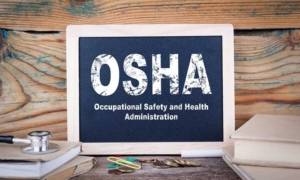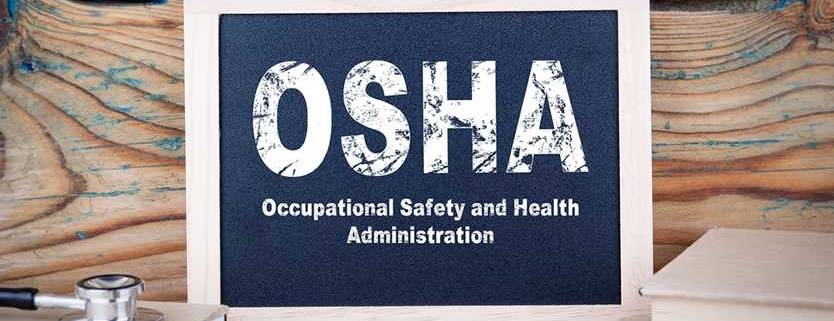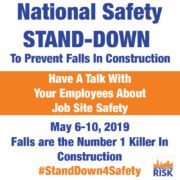Did you know it’s a felony for an Unsafe Work Environment?
Did you know that having a blocked emergency exit could cost your organization about $130,000?
Were you aware that safety and supervisory staff could face up to 25 years in FEDERAL PRISON for willful OSHA violations leading to deaths?
You want to have well-placed practical steps in order to protect your workers and prevent OSHA from issuing willful violations. Since 1970, OSHA was/is still ran by the federal government and are responsible for worker safety. OSHA regularly issues citations/fines based on the general duty clause. Broad by nature, the clause states that employers are required to provide their employees with a place of employment that is “free from recognized hazards that are causing or are likely to cause death or serious harm.”
INSPECTION TARGETS
There are essentially two targets OSHA inspects, one of them being specific inspection targets such as an Employee, Union Rep, etc. The other, being general targets like the Administrative Plan for High Hazard Industry. Doing a mock check-up and informing your employees or anyone who is a target of safety violations once an inspector decides to come by increases your chances of reducing your citations to zero. A NJ Plastics manufacturer, who never had a repeat-violation, had one of their employees call OSHA to report a blocked exit which resulted in 16 citations and fines exceeding $430,000. The employer and employee were clearly never on the same page in regards to OSHA compliance and safety protocols.
HOW DO THESE INSPECTIONS OCCUR?
OSHA requires that employers report fatalities, hospital admissions (8 hours), severe work-related injury of an employee (24 hours) such as amputations, loss of an eye and in-patient hospital admissions. However, employees who have been exposed to smoke from a burning house and was checked in and out at a hospital do not count. Once an inspector from OSHA comes around, make sure they show their credentials, complaint, and warrant. Yes, you can ask for a warrant, however, this usually results in an annoyed inspector returning to you.
You also want to make sure you call the nearest OSHA office to verify the inspector’s credentials, verify that your organization is to be inspected and inform them if you are part of an OSHA voluntary program. During the inspection, the officer will explain why you were selected and the scope of the inspection. You can find the OSHA Reporting Guide for 2018 HERE for free.
BEGINNING OF THE INSPECTION PROCESS
During the initial stages of the visit, the compliance officer and the employer will have selected employee reps from the following groups:
- Union Selection (1st)
- Safety Committee Selection (2nd)
- Employees at Large Selection (3rd)
- No Selection → Then the compliance officer will conduct a reasonable number of employee interviews.
The inspection will continue as the compliance officer reviews OSHA logs/accident records, conduct employee interviews, point out violations, collect evidence (tests, readings, photographs), etc. At the end of the visit, the compliance officer will review the apparent violations, provide compliance literature, inform you of your rights, listen to additional compliance and abatement information, but he/she will not disclose and discuss fines.
THE BENEFITS & RISKS OF ASKING FOR A WARRANT
Benefits include preserving your rights of privacy against the government and buying time to address your circumstances. However, the risks underlie larger fines/citations. 2.6 violations are given if cooperated and 4.6 violations if a warrant is required. $1,800 in fines with cooperation and $3,200 in fines if they require a warrant. If you choose to cooperate it may give an innocent undertone, fewer citations/fines and increased control over the inspection process. In opposition, if you choose to risk it voluntarily, you may be visited more often, they may intricately inspect everything in sight and obtain any information needed for a warrant.
CURRENT FINES & EFFECTS
As of January 2, 2018, the violations and penalties have seen a surge of inflation. According to OSHA, a “Serious, Other-Than-Serious Posting Requirements” penalty results in a $12,934 fine per violation. “Failure to Abate” results in a $12,934 per day beyond the abatement date. A “Willful or Repeated” violation is a $129,336 per violation. Taking on these violations and fines can dig a serious financial grave for any business. Preventing these circumstances is your best bet.
WHAT ARE THE OPTIMAL STEPS FOR PREVENTION?
It’s simple but it’s also a culture that needs to be tailored to your industry/business.
A good method of making sure you are precise in your operations is to keep track of your safety efforts using technology. It can be as simple as using a smartphone to stay alert or keeping a laptop with you. Empowering your employees to sustain an anonymous reporting procedure, suppresses threats of retaliation. Always be ready to take the extra step to do your own mock inspections, interview your employees on knowledge of their rights, consider third party assistance and consult your legal counsel with your plans.
ACTIONS HAVE REACTIONS AND VICE VERSA (SOMETIMES)
When a Compliance Officer is on-site and you know you are not ready, correct what you can IMMEDIATELY. Have your capital address plans for safety, review appeals guide and appeal where it is appropriate, ABATE as soon as possible (do not pass abatement dates) and ensure that you have addressed recommendations from internal and external resources. However, ensuring you are not in this situation is what you want to aim for.
CRIMINAL PROSECUTION (VERY POSSIBLE) LIKELIHOOD, SEVERITY & STATISTICS
Factors which spike the likelihood are the memorandum of understanding between the DOJ & DOL, all prosecution is under the environmental crimes division of the DOJ and the increased communication and demanding accountability between the civil division/criminal division attorneys.
Did you know that a worker death due to unsafe work conditions results in a felony and a possible 25 years in prison! A former Class B misdemeanor is not a 6-month prison sentence. If you still need to understand the severity of your circumstances, contact one of our risk advisors right away.
Since OSHA intercepted there have been less than 80 cases prosecuted. But, 12 of these 80 cases have resulted in convictions, a 15% conviction rate.
ENDING NOTE…
As you can assume, these laws will continue to shape how businesses conduct themselves and possibly shrink flexibility. Complying with the OSHA is imperative, as is to take action towards fixing circumstances that may land you in jail.
Speak with one of our RISK ADVISORS for a free consultation or give us a call at 914.357.8444








